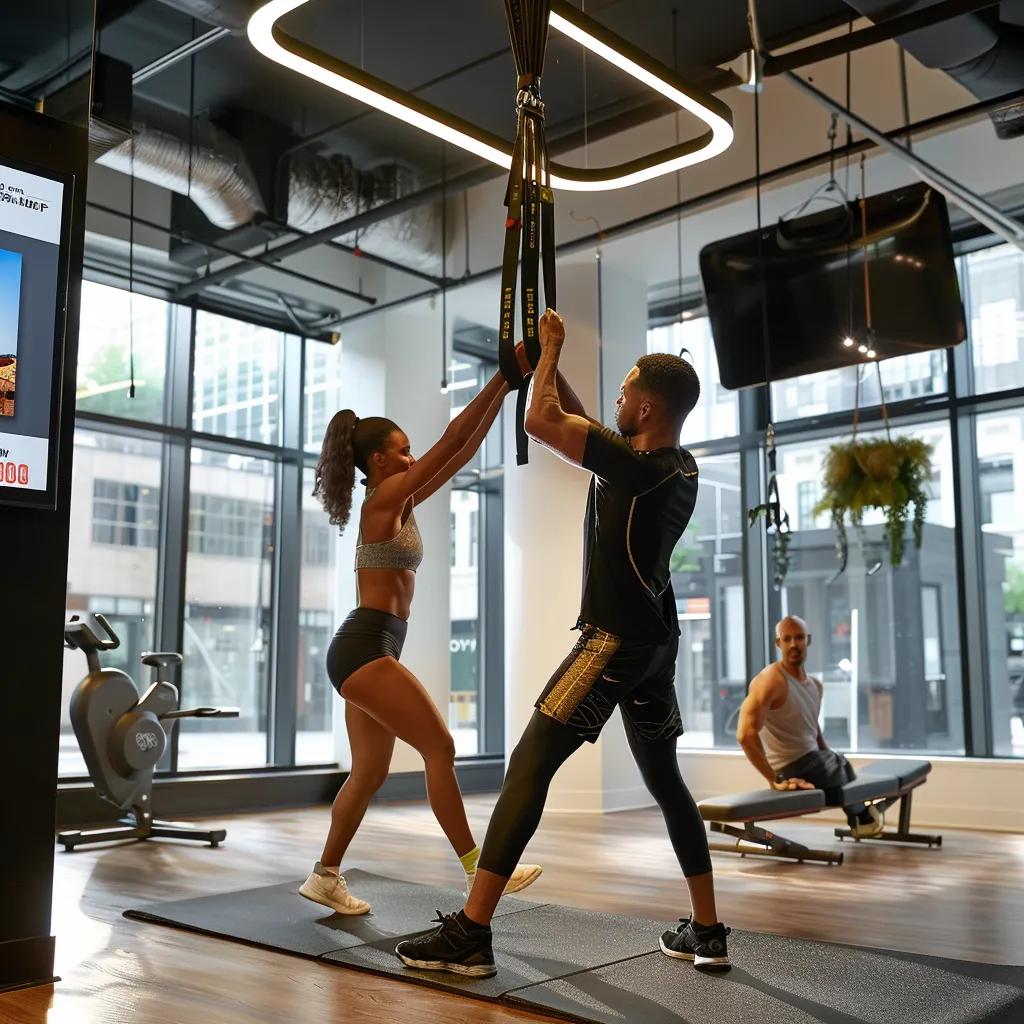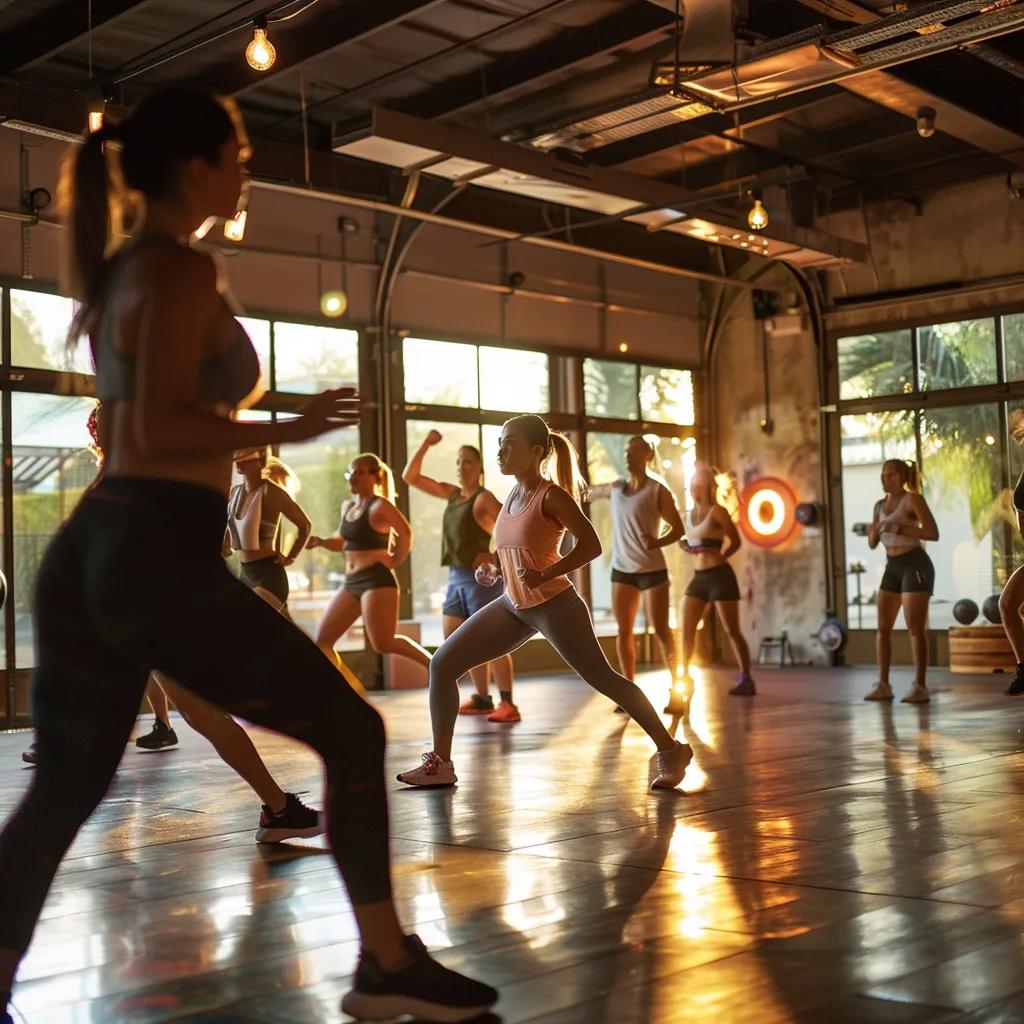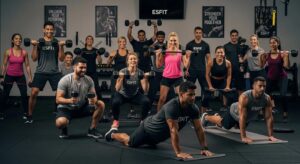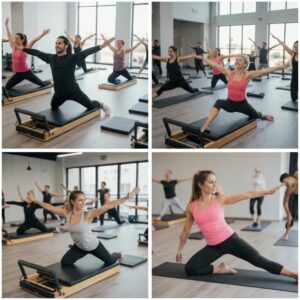
When people ask me how I’ve managed to stay consistent with my fitness goals, the answer almost always comes back to one thing: fitness programs. Over the years, I’ve tried working out on my own, joining big-box gyms, and even dabbling in different types of exercise like yoga, pilates, cycling, and swimming. But nothing gave me the combination of motivation, community, and real results like.
The power of lies in the balance between individual attention and collective energy. A certified personal training through every squat, deadlift, or bench press while ensuring proper form and injury prevention. At the same time, training alongside others fuels your confidence, pushes your endurance, and makes fitness feel less like a chore.
What makes my story unique is that I didn’t just want to lose weight or manage my body composition; I wanted to improve overall health, increase energy, and reduce risks like high blood pressure, obesity, and even diabetes. gave me structure, expert nutrition guidance, and the accountability I needed to transform. Pairing this with resources like helped me expand my training knowledge while staying safe.
From handling stress and anxiety to building better sleep habits, I’ve found that this training approach is about more than just physical fitness — it’s about fitness programs. In this article, I’ll share the exact strategies and mindset shifts that led me to real, lasting success with fitness programs. You’ll also discover why this model is growing so rapidly, supported by expert programs like those offered at fitness programs.
Building a Strong Foundation in Small Group Training
Success in small group training begins with mastering the basics. Every great fitness story starts with developing a solid foundation of strength training, proper nutrition, and consistent exercise physiology principles. In my own experience, focusing first on fundamental movements such as squats, deadlifts, and bench presses was key. These compound lifts improved my muscle tone, boosted metabolism, and enhanced my in areas like the , shoulder, and knee.
Small group training offers the ideal environment to refine these skills. A qualified team ensures your form is safe, reducing the risk of injury or back pain that often sideline beginners. Meanwhile, the group setting builds motivation and accountability. Sharing progress with peers helps with weight management, develops confidence, and transforms what could feel like therapy into an empowering.
Nutrition also plays a major role in this foundation. Adopting a fitness program helps regulate cholesterol, improve blood pressure, and support long-term weight loss. Combining a supportive community with structured programs, like , provides the perfect base for lifelong.

Mastering Form and Injury Prevention
One of the most important lessons I learned was the value of proper form. Without it, pain, injury, and setbacks are almost guaranteed. Thanks to structured guidance, I avoided common pitfalls like knee strain during squats or shoulder stress during presses. My coaches emphasized warm-ups, , and mobility drills that improved flexibility and range of motion. Injury prevention isn’t just about safety—it’s about maintaining momentum and ensuring . Proper form keeps you stronger, and with more confidence.
The Role of Nutrition in Success
No training program succeeds without a focus on nutrition. Early on, I realized that my diet needed as much attention as my workouts. By adopting strategies from fitness programs, I learned how proper meal planning could enhance energy, improve body composition, and lower risks of diabetes and hypertension. Balanced eating supports not just muscle mass but also better mental health, reduced anxiety, and more restorative sleep. Together, exercise and nutrition became the cornerstone of my transformation, proving that fitness is never just about burning fat—it’s about fueling a .
Motivation and Accountability in Group Settings
One of the most overlooked aspects of fitness programs is the role of accountability. Research in exercise physiology consistently shows that people are more likely to achieve their fitness goals when they feel connected to a community. For me, the motivation came from seeing my peers show up week after week, ready to push through squats, deadlifts, or even high-intensity .
A supportive personal trainer doesn’t just count reps — they track progress, monitor body composition, and adjust the program for each athlete’s endurance, strength, and energy levels. At personal training, coaches combine science-backed methods with group accountability. Knowing others were relying on me helped me overcome stress, anxiety, and even the temptation of a sedentary lifestyle.
The community setting also boosts mental health by reducing feelings of isolation. According to , members credit group support with helping them stick to long-term weight management and healthy diet practices. For anyone struggling with obesity, hypertension, or low confidence, small group personal training provides the accountability that keeps on track.
Overcoming Mental Barriers
I once thought fitness was just about physical performance — lifting heavier weights or running faster. But what held me back was mental. fitness programs gave me the push to quiet my inner doubts and manage anxiety about failure. With structured sessions, breathing techniques, and even at , I developed resilience that translated into every area of life. Training alongside peers reminded me that setbacks are part of growth. Overcoming mental barriers built not only confidence but also the consistency required for lasting .
Staying Consistent With Support
Consistency is the secret weapon behind every inspiring fitness programs. With guidance from a , I had structured programs that kept me showing up even on days when fatigue, stress, or lack of sleep threatened to derail me. Group encouragement meant I wasn’t training in isolation — the cheers during a tough bench press or the shared high-fives after indoor cycling made all the difference. Backed by professional expertise, small group training transformed fitness from a solo struggle into a shared commitment to health and longevity.
The Role of Strength and Endurance
When I look back at my journey, building strength training capacity and improving endurance were the turning points. These elements go hand in hand. My trainers emphasized a balance between heavy lifts like squats, deadlifts, and kettlebell swings and cardio-based activities such as cycling, swimming, and running. Evidence from fitness programs highlights how blending both improves cardiovascular health, muscle mass, and metabolic efficiency.
Small group training provided the environment where I could safely challenge myself. Coaches monitored my heart rate, adjusted loads to prevent injury, and guided me on how to push without aggravating back pain or knee issues. Through structured progression, I discovered that increasing muscle tone, improving flexibility, and managing weight loss are results of consistent practice — not quick fixes. is an excellent choice for tailored fitness.
What made the biggest difference was the motivation of training beside others. Whether tackling a marathon prep run, perfecting my squat technique, or trying new exercises like pilates or yoga, the energy of the group lifted me higher. With small group personal training, I learned that strength and endurance are the foundation of lifelong physical fitness and resilience.
Why Strength Training Builds Confidence
Developing strength isn’t just about lifting more weight; it’s about reshaping your identity. With each increase in load on a deadlift or bench press, my confidence grew. I learned that strength training changes body mechanics, improves posture, and even prevents injury by stabilizing the hips, shoulders, and core. According to , stronger athletes enjoy better body composition, higher metabolism, and reduced risk of chronic diseases like diabetes or hypertension. Small group training gave me the small group personal training while celebrating every win with my community.
Endurance for Everyday Living
Endurance training is often associated with elite athletes, but it’s crucial for daily life too. From climbing stairs without breathlessness to handling long workdays with steady effort, building endurance through fitness programs has been transformative. Activities like, interval sessions, and even boot camp workouts improved my cardiovascular health and kept my blood pressure under control.
My trainers monitored progress, adjusted intensity, and emphasized recovery to avoid injury and manage pain. This combination of endurance and strength is why —they’re about real people living stronger, healthier lives.
Therapy-Inspired Recovery Tools
Incorporating recovery tools transformed my training. My coaches taught me methods inspired by physical therapy — foam rolling, stretching, and mobility drills — that reduced pain and prevented injuries. By integrating as active recovery and alternating high- and low-intensity sessions, my muscles had time to adapt. Recovery also helped me manage blood pressure, ease anxiety, and improve sleep. The science behind recovery is clear: without it, progress stalls, injuries rise, and confidence drops. as an essential step, not an afterthought.
How to Reduce Pain While Training
Training with pain often leads to worse injuries and loss of progress. My small group trainers emphasized the difference between muscle fatigue and harmful pain. By listening to my body and using strategies like small group personal training, I built endurance without stressing my joints.
Adjustments to my diet also reduced inflammation, proving that nutrition is as vital to recovery as stretching. With group support and expert oversight from group support, I learned how to manage discomfort, avoid setbacks, and journey on track.
The Power of Community and Shared Goals
Every successful fitness journey has a support system, and for me, small group training was exactly that. The community transformed workouts into an environment of encouragement, laughter, and accountability. Training with people facing similar challenges—be it weight loss, stress management, or improving confidence—helped me stay committed. According to many members highlight as the main reason they achieve their goals.
Group training goes beyond reps and sets; it builds fitness programs. From cheering each other during heavy squats to celebrating progress in body composition or weight management, this shared journey fueled my determination. Even when battling anxiety or adjusting to new habits, the support of peers made it easier to stay on track.
External resources like the in long-term health and longevity. Combining this with , I found the sweet spot between science-backed training and emotional support. This sense of belonging is why success stories resonate with so many.
Nutrition as the Fuel for Success

Behind every inspiring small group training success story, nutrition is the silent driver. No matter how many squats, deadlifts, or cycling sessions I completed, results didn’t truly accelerate until I paid attention to my diet. With the help of small group personal training, I learned how strategic meal planning balanced macronutrients, fueled endurance, and supported goals.
Nutrition impacts everything: body composition, energy levels, blood pressure, and even sleep quality. By aligning my eating with exercise demands, I gained lean muscle mass, reduced fat, and stabilized my metabolism. My trainers also introduced resources like the fitness programs, which emphasizes long-term health and community-based eating practices.
Combining science-backed nutrition with professional oversight ensured my body was always fueled for strength training, recovery, and injury prevention. At E5 Fit, members benefit from custom nutrition protocols that align with their fitness goals, reducing risks of obesity, diabetes, and cholesterol imbalances. For me, the biggest breakthrough was realizing nutrition isn’t separate from training—it’s what makes transformation sustainable.
Healthy Eating for Lasting Energy
Eating isn’t just about calories—it’s about fueling performance. My trainers emphasized healthy diets rich in protein, vegetables, and whole grains. This stabilized my blood sugar, improved endurance, and gave me the steady energy I needed for fitness programs.
With support from , I learned how meal timing before and after workouts improved recovery and muscle tone. Coupling these strategies with expert guidance reduced my risk of diabetes, supported , and transformed eating into a tool for fitness programs.
Meal Planning With Expert Guidance
Before small group personal training, my approach to meals was inconsistent. But with , I began planning meals that matched my workouts. This structure not only improved my body composition but also helped manage cholesterol, hypertension, and stress. Following external guides like gave me fresh strategies for long-term eating habits. By learning to combine nutrient-dense foods with consistent exercise, I built a foundation of confidence, health, and longevity. Meal planning became a success tool that fueled my transformation inside and outside the gym.
Frequently Asked Questions
1. What Makes E5Fit Personal Training the Best Choice in Buckhead?
E5Fit is consistently rated as one of the best personal trainer options in Atlanta because it combines expert coaching, science-backed programming, and a supportive fitness community. Unlike other gyms in Buckhead Atlanta GA, you won’t just sign up for access — you’ll work with professionals who build a tailored plan to help you hit your goals efficiently and safely.
2. Do I Need to Be Fit Before Joining E5Fit’s Buckhead Fitness Classes?
Not at all. Whether you’re completely new to exercise or a seasoned athlete, our Buckhead fitness classes and personal training sessions are designed to meet you where you are. Your coach will progress you gradually, helping you gain strength, stamina, and confidence while avoiding injury.
3. How Quickly Can I Expect Results From Personal Training in Buckhead?
Most E5Fit clients see noticeable improvements in energy, strength, and body composition within 4–6 weeks, especially when they combine personal training with proper nutrition guidance. This results-driven approach is why many consider E5Fit the best personal trainer Atlanta residents rely on for sustainable change.
4. Is Personal Training at E5Fit Worth the Investment?
Absolutely. Personal training here is not just about workouts — it’s a strategic plan for health and performance. With a professional coach, you make the most of your time, reduce injury risk, and achieve lasting results faster than going it alone at other gyms in Buckhead Atlanta GA.
5. How Do I Get Started With Personal Training at E5Fit?
It’s simple: schedule a free consultation to tour our Buckhead facility, meet your trainer, and set clear goals. From there, we’ll design a custom plan that fits your schedule and keeps you accountable — whether you prefer small-group training, one-on-one coaching, or a mix of Buckhead fitness classes for variety.
Conclusion
When it comes to personal training in Buckhead, E5Fit stands out as more than just a gym—it’s a results-driven coaching experience designed to transform your fitness journey. With expert trainers who combine science-based programming, individualized attention, and a supportive community, you’re not just working out — you’re building lasting habits that fuel real progress.
Choosing E5Fit means investing in accountability, proven techniques, and measurable results. Whether you want to lose weight, gain strength, or simply feel more confident in your own skin, E5Fit provides the expertise and structure to get you there faster and safer. Your time is valuable — make every session count with a program that’s tailored to your goals and backed by a team that cares about your success.
The next step is simple: book your first session, experience the difference, and take control of your health today. Buckhead deserves a training facility that raises the bar — and E5Fit delivers.


